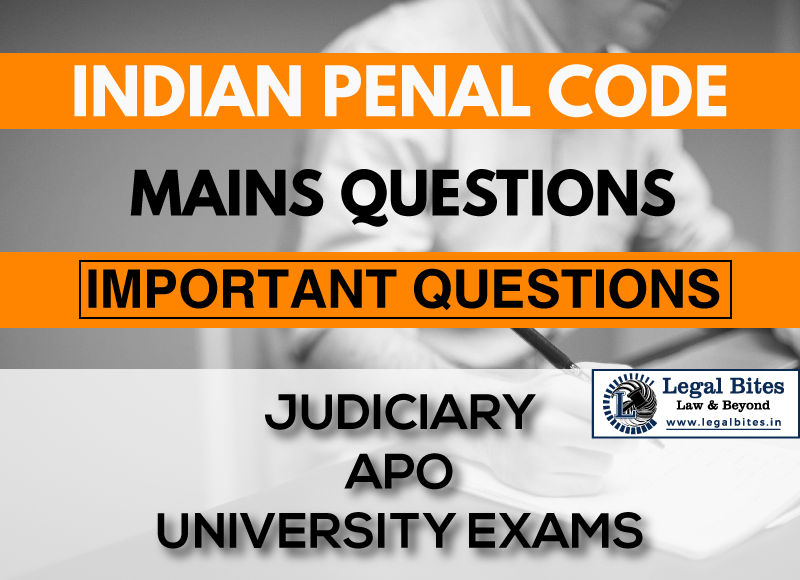‘R’ a girl, refused to marry her boyfriend ‘S’, resulting in his depression. ‘N’, a friend of ‘S’, suggested he take revenge with an intention that `S’ will come out of shock, ‘N’ provided ‘S’ a bottle of liquid believing it like acid. `S’ mistook `P’ to be ‘R’ in darkness…
Question: ‘R’ a girl, refused to marry her boyfriend ‘S’, resulting in his depression. ‘N’, a friend of ‘S’, suggested he take revenge with an intention that `S’ will come out of shock, ‘N’ provided ‘S’ a bottle of liquid believing it like acid. `S’ mistook `P’ to be ‘R’ in darkness and threw the liquid on ‘P’,… Read More »
;Question: ‘R’ a girl, refused to marry her boyfriend ‘S’, resulting in his depression. ‘N’, a friend of ‘S’, suggested he take revenge with an intention that 'S’ will come out of shock, ‘N’ provided ‘S’ a bottle of liquid believing it like acid. 'S’ mistook 'P’ to be ‘R’ in darkness and threw the liquid on ‘P’, causing rashes on her face, which later resulted in serious injuries. The investigation revealed that it was not acid but was a concentrate...
Question: ‘R’ a girl, refused to marry her boyfriend ‘S’, resulting in his depression. ‘N’, a friend of ‘S’, suggested he take revenge with an intention that 'S’ will come out of shock, ‘N’ provided ‘S’ a bottle of liquid believing it like acid. 'S’ mistook 'P’ to be ‘R’ in darkness and threw the liquid on ‘P’, causing rashes on her face, which later resulted in serious injuries. The investigation revealed that it was not acid but was a concentrate of fungicide. Decide the Criminal liability of ‘S’ and 'N’ in this case.
Find the answer to the mains question only on Legal Bites. [‘R’ a girl, refused to marry her boyfriend ‘S’, resulting in his depression. ‘N’, a friend of ‘S’, suggested he take revenge with an intention that 'S’ will come out of shock, ‘N’ provided ‘S’ a bottle of liquid believing it like acid. 'S’ mistook 'P’ to be ‘R’ in darkness…]
Answer
Section 326B deals with the punishment for the offense of voluntarily throwing or attempting to throw acid. It states,
Whoever throws or attempts to throw acid on any person or attempts to administer acid to any person, or attempts to use any other means, with the intention of causing permanent or partial damage or deformity or burns or maiming or disfigurement or disability or grievous hurt to that person,
shall be punished with imprisonment of either description for a term which shall not be less than five years but which may extend to seven years, and shall also be liable to fine.
Section 326B prescribes imprisonment of either description for a term ranging between five and seven years, with fine, for the person who throws or attempts to throw acid or any corrosive substance on another or attempts to administer acid or corrosive substance to him or to use any other means with the intention of causing permanent or partial damage, deformity, burns, maiming, disfigurement, disability or grievous hurt to that person.
Thus, intention plays a crucial role to bring the accused under the punishment of Section 326B. In the present case, despite the fact that S mistook the bottle of liquid as acid, the intention was present there to voluntarily throw acid on any person with intention of causing partial damage or deformity to the face of the person.
Here, the provision mentions throwing of acid to “any person” so even though S mistook ‘P’ to be ‘R’ and has caused serious injuries to P, he is liable under this section. Hence, S and N who procured such corrosive substance shall be punished under Section 326B.
Important Mains Questions Series for Judiciary, APO & University Exams
- IPC Mains Questions Series Part I: Important Questions
- IPC Mains Questions Series Part II: Important Questions
- IPC Mains Questions Series Part III: Important Questions
- IPC Mains Questions Series Part IV: Important Questions
- IPC Mains Questions Series Part V: Important Questions
- IPC Mains Questions Series Part VI: Important Questions
- IPC Mains Questions Series Part VII: Important Questions
- IPC Mains Questions Series Part VIII: Important Questions
- IPC Mains Questions Series Part IX: Important Questions
- IPC Mains Questions Series Part X: Important Questions





